An ‘everlasting force,’ Williams Center celebrates 40 years of excellence
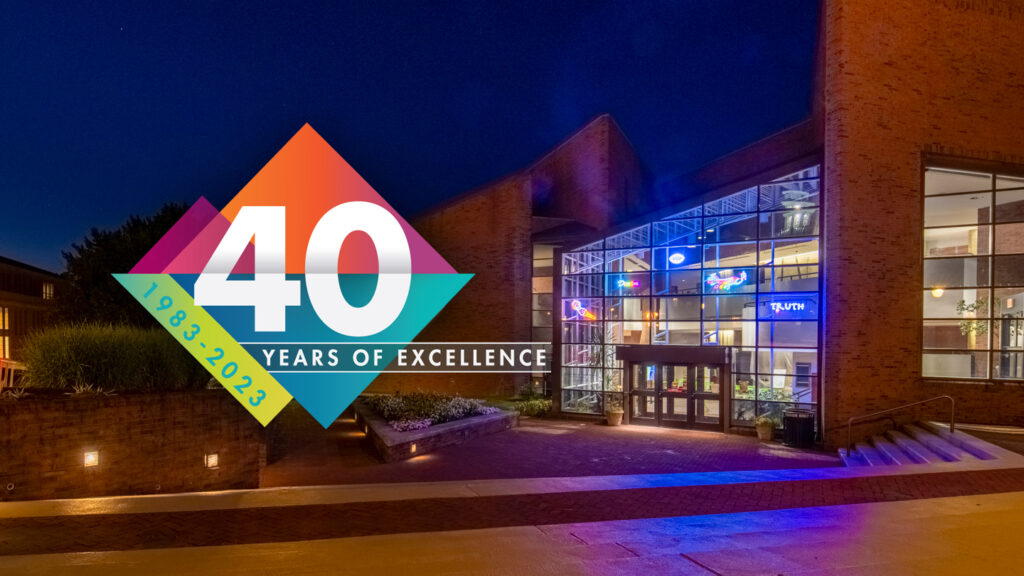
By Bryan Hay
Before the opening of Zoellner Arts Center at Lehigh University and the ArtsQuest campus in Bethlehem, Lafayette’s Williams Center for the Arts opened its doors in 1983, establishing a rich tradition of visual and performing arts that has consistently brought the finest established and emerging talent to campus and the Lehigh Valley.
For 40 years, the center, on the eastern edge of campus, has offered a welcoming destination for the College and regional communities, creating a sweeping energy that pulls guests through the glass atrium and into the intimate 400-seat theater for the popular Performance Series. Students from all academic areas experience Lafayette’s liberal arts tradition through the arts in its classrooms and studios.
Experiences in the theater are visceral, human, and memorable—audiences can see the fine vocal mist from a singer or a bead of sweat forming on the forehead of a trumpet soloist in the midst of a demanding concerto, or marvel at how the nimblest instrumentalist gracefully recovers from a snapped harpsichord or violin string in the heat of a stirring performance.
After each concert, audiences and performers meet and mingle casually in the lobby over cookies and punch, encounters that would rarely be experienced in concert halls in large cities.
Offering a who’s who of the artistic world, Williams Center has hosted legends and legends in the making, including performances by Philip Glass, the Hilliard Ensemble, Andreas Schiff, Emanuel Ax, Edgar Meyer, Joshua Rifkin (who’s back on campus for a yearlong residency); string quartets; brass, wind, and even ukulele ensembles; chamber choirs; vocalists; dance and ballet companies; choreographers; and jazz musicians, including just about every member of the Marsalis family.
Williams Center and its audiences also enjoy an extended residency and a global laboratory for the Orpheus Chamber Orchestra, the conductorless, anti-hierarchical orchestra based in New York. With Easton’s relative proximity to New York air terminals performers from Europe, Asia, and Africa often make their way to the Williams Center as part of their international tour schedules.
The center also provides classrooms for music and art history, the Williams Center Gallery for rotating art exhibits, the Kirby Art Study Center holding much of the College’s historical art collection, space for extracurricular programs in music, art, and theater, and practice rooms.
Lafayette College was fertile ground for a first-rate arts center, having a tradition of presenting a performance series before Williams Center opened, with programs hosted at Colton Chapel and theater productions staged on the second floor of Hogg Hall. Students playing in the concert band rehearsed in Alumni Gym (now Oechsle Hall). Lafayette’s visual arts program also predated the Williams Center, with works exhibited in Van Wickle Hall.
Lafayette didn’t have a full-curriculum art department or a permanent home for the performing arts prior to 1983, but Ed Kerns, Eugene H. Clapp II ’36 Professor of Art emeritus, remembers how the opening of the center “instantly changed everything,” noting how the number of art majors and the College’s reputation for the visual and performing arts soared.
Recognizing a need for students to have a central space for the arts, Easton businessman Morris R. Williams, Class of 1922, stepped forward with a lead gift, first made anonymously, which led to the construction of Williams Center for the Arts, which began in 1981.
At the building’s dedication Sept. 30, 1983, Williams described it as “an everlasting force in the future development of the College,” according to the College’s archives. The brick, limestone, and glass building, which cost $8.7 million to build, was designed by the architecture firm Perkins&Will of Washington, D.C.
In celebration of Williams Center’s 40th anniversary, we present a yearlong series of stories about the people who built and continue to build a legacy of excellence at the Williams Center. The series begins with reminiscences from Ellis Finger, the first director of Williams Center, and will continue next month with Bob Mattison, Marshall R. Metzgar Professor of Art.
Beginnings
Ellis Finger came to Lafayette College in 1973 to teach German, but when plans for Williams Center for the Arts started to take shape in the early 1980s, the musically oriented administrator stepped forward and offered to serve as its first director.
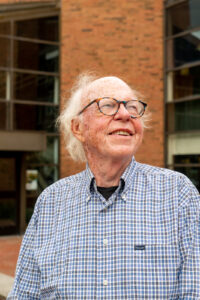
Ellis Finger, the first director of Williams Center
A natural programmer, lifelong devotee of the arts, and amateur choral singer with an entrepreneurial spirit, he coordinated programming by Lafayette’s performance ensembles and managed a guest artist series of classical music, world music, jazz, dance, and contemporary work from the center’s opening in 1983 to his retirement in 2014.
During a wide-ranging conversation over the summer at the Williams Center, a rush of memories came pouring back for Finger, who still regularly attends performances at Williams Center and remains active in the Lehigh Valley’s performing arts community, serving as a classical music host for WDIY-FM and program translator for the Bach Choir of Bethlehem, an internationally respected organization he sang with for many years.
“Through the mid and late 1970s, more and more discussions were happening about a new performing arts center and how desperately it was needed,” he says, recalling how arts education facilities and public performance spaces were scattered across campus, often in acoustically or environmentally inappropriate settings, with no central home or identity.
“All the facilities were just embarrassing, not even worthy of a high school program,” he says. Aware of the situation, former President David Ellis worked behind the scenes to persuade an alumni supporter on the vision to establish a permanent home for the performing arts.
During a Marquis Society dinner in 1980, an announcement was made that a donor had agreed to provide funds to build a center, Finger says. Ground was broken the following year, with the Williams Center opening in fall of 1983.
His identity and generosity eventually revealed, Morris R. Williams, Class of 1922, an Easton businessman from “an Easton royal family,” as Finger describes it, declared at the dedication ceremony on Sept. 30, 1983, that the facility “will be a great thing for Lafayette in the future.”
Finger, with an established relationship with theater, music, and visual art faculty, a passion for the arts, and experience as a development officer for the College, offered himself to manage the new center.
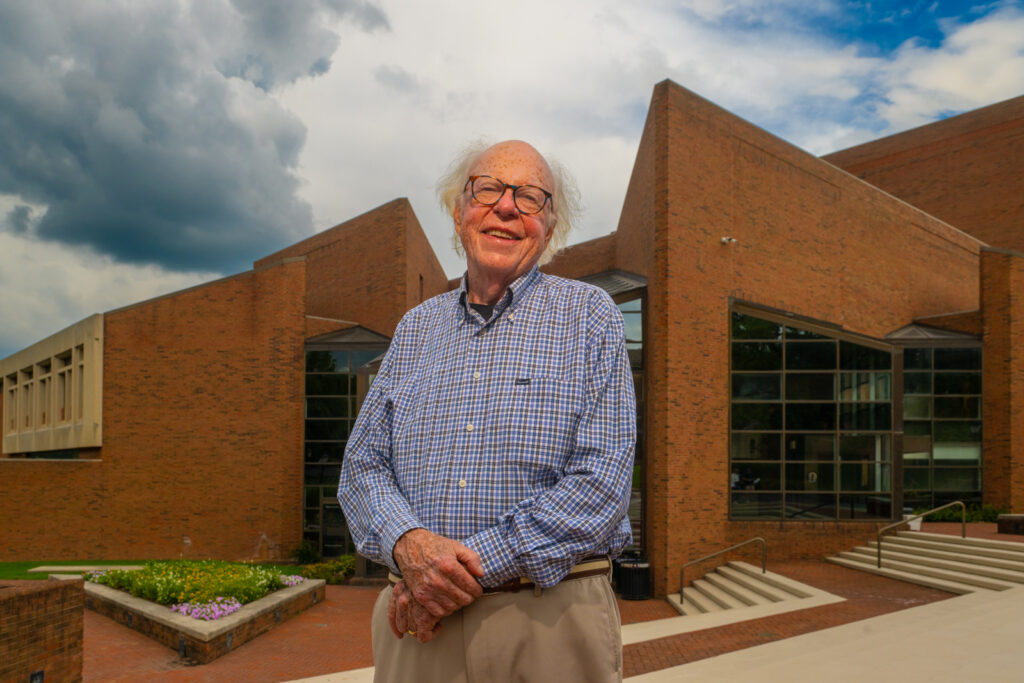
Ellis Finger
“Give me a shot,” he remembers saying. “They did a national search and certainly interviewed other people. Members of the search committee felt comfortable with me, because I had established myself with the arts faculty and the student community.”
During the dedication ceremony, Williams presaged Finger’s success, stating, “I am glad to hear that a very, very fine person, Dr. Ellis Finger, has been appointed director. I am sure that, under his leadership, the center will afford a great deal of pleasure to the people of this community and will become an asset to Lafayette College and be an everlasting force in the future development of the College.”
Finger rose to the occasion with his innate gift for programming, orchestrating a red-carpet inaugural season, booking performances by the Guarneri Quartet; André-Michel Schub (recent gold medalist in the Van Cliburn competition); Philip Jones Brass Ensemble; Jean-François Paillard Chamber Orchestra; Washington Ballet; Actors from the London Stage; and guitarist Eliot Fisk, with flutist Carol Wincenc.
Violinist Isaac Stern, a Thomas Roy and Lura Forrest Jones Visiting Lecturer, came to campus on Nov. 30, 1983, as part of the Williams Center’s inaugural events.
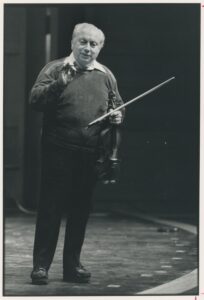
Violinist Isaac Stern during his 1983 lecture at Lafayette
Supported by endowment funds, a line item in the College’s budget to support a performing arts series, government grants, and the Friends of the Williams Center, Finger presented an exclusively classical music-oriented series for the first few seasons.
But that soon evolved with Lafayette’s ever-expanding scholarship and intellectual curiosity and spread into new, more diverse directions.
Artistic expansion
“We had the opportunity to expand and to grow and to diversify, so we took the plunge, adding modern jazz, visual arts, and dance,” Finger says.
Collaborating with percussionist Larry Stockton, professor emeritus of music and former head of the department, Finger would soon add world music to the performance series.
“Building on his interests in the arts of Japan, Larry had the chance to spend a summer in Ghana and West Africa, learning Djembe drumming,” Finger says. “He’s also a skilled teacher of Indian music, Indian classical music with raga, and other types of world music. So that became another presenting platform that also supported his teaching. And it had a big community appeal. Soon, we started presenting music from Iran, Syria, Russia, Armenia, Africa, India, Japan, Korea, South America.”
Williams Center also became an active dance presenter, with commissioned works and world premiere performances by such diverse choreographers as Philadelphia hip-hop master Rennie Harris and Japanese butoh movement artists Eiko and Koma. Pioneering choreography by Merce Cunningham, Trisha Brown, Lucinda Childs, and Paul Taylor also was presented.
Calling Orpheus
As the mid-1980s approached, Finger contemplated an idea for an orchestral residency at the Williams Center and, true to his bold programming instincts, cold-called the Grammy-winning Orpheus Chamber Orchestra.
“I happened to call just to inquire about their interest in Lafayette,” he remembers, adding that the timing of the call couldn’t have been better. “It turned out that Orpheus, at that very moment, was envisioning greater run-out activity. Based in New York City, they sought a situation where they’d get on a bus at 4 p.m., go to the site, and be back home by midnight. The Williams Center offered the perfect geography for that to happen.”
Orpheus would go on to perform three concerts per season under Finger’s tenure, often bringing front-line soloists at no additional cost; the relationship continues as Williams Center celebrates its 40th anniversary.
“Williams has always provided Orpheus with a place to road-test its programs before presenting the concert at their home at Carnegie Hall, a bonus for our audiences,” Finger says.
“I couldn’t have afforded to hire Emanuel Ax, for example, but when he came here with Orpheus, which had engaged him for their season that year, everybody gained by it,” he says. “Even though Williams is a smaller venue than they’re used to, they can always work out their cues and benefit from the subtle dynamics achieved in this intimate setting before presenting their concert in New York.”
Audience-performer bond
With a few exceptions, Finger always presented a fresh slate of performances for each season, and many musicians and dancers over the years have appreciated the acoustical properties of Williams Center and the informal post-performance interactions with audience members in the Williams Center lobby.
“Performers have always liked the intimacy of our concert hall and the opportunity to meet the audience after the concert,” he says, recalling some of his most memorable performances, among them Edgar Meyer’s performance with the Emerson String Quartet, sitar virtuoso Anoushka Shankar, who performed a new concerto written for her by her father, Ravi Shankar, and violinist Nadja Salerno-Sonnenberg’s performance of Astor Piazzolla’s Four Seasons of Buenos Aires with Orpheus.
“Our audiences feel like a family. You always see someone you know and instantly strike up conversation at intermission or afterward about what was just experienced during a performance,” he says. “We’ve been blessed by the Williams Center, a great cultural resource for our campus and the wider community. And there’s so much more to come and experience.”
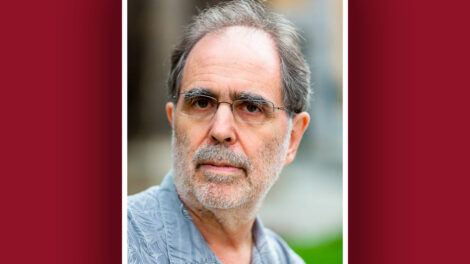
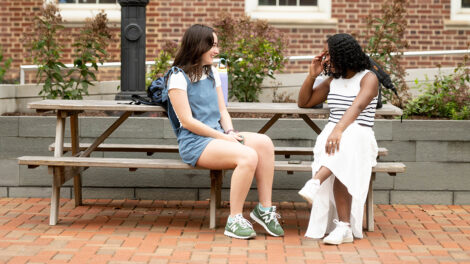
1 Comment
What a nice article. Ellis did a great job of growing the Performing Arts Series. He accomplished much to be admired.
The “Williams Center for the Arts”was the academic home to the Art Department, Music Department and the Theater Program.
Michiko Okaya, Diane Ahl, and Ida Sinkevic along with many other faculty members were major contributors to the development of the Art presence anchored by this center. Robust programs in the arts grew quickly providing a more balanced academic experience for students.
After sixteen years, the building was renamed the “Performing Arts Center” after the Williams Visual Arts Building opened, a forerunner of the Arts Campus, now firmly established at the base of College Hill. Congratulations to Ellis and all who contributed to the success of the Arts at Lafayette College.
Comments are closed.